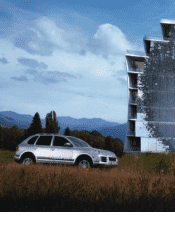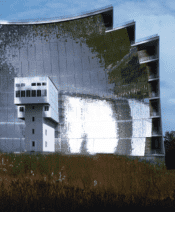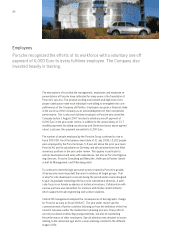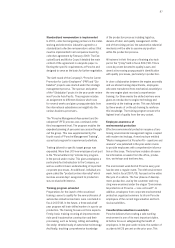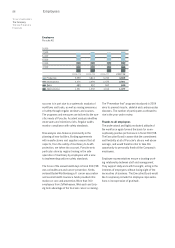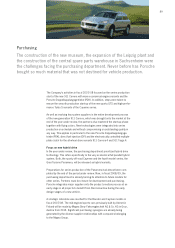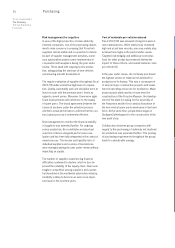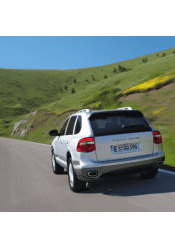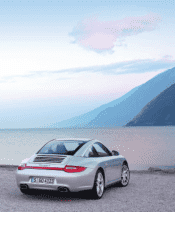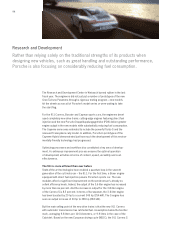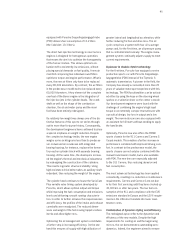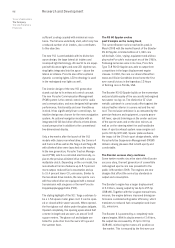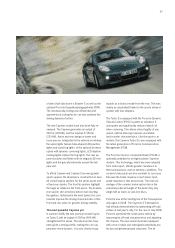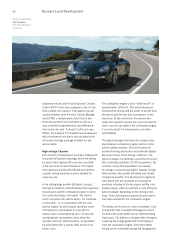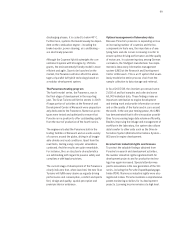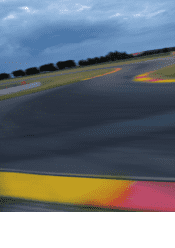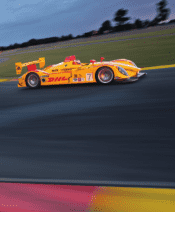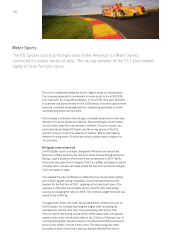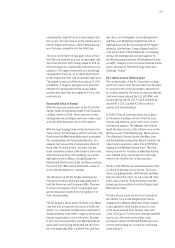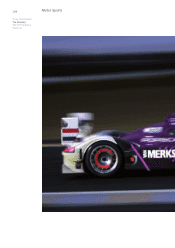Porsche 2007 Annual Report Download - page 97
Download and view the complete annual report
Please find page 97 of the 2007 Porsche annual report below. You can navigate through the pages in the report by either clicking on the pages listed below, or by using the keyword search tool below to find specific information within the annual report.
Research and Development
Rather than relying solely on the traditional strengths of its products when
designing new vehicles, such as great handling and outstanding performance,
Porsche is also focusing on considerably reducing fuel consumption.
The Research and Development Center in Weissach burned rubber in the last
fiscal year. The engineers did not just put a number of prototypes of the new
Gran Turismo Panamera through a rigorous testing program – new models
hit the streets across all of Porsche’s model series or were waiting to take
the start flag.
For the 911 Carrera, Boxster and Cayman sports cars, the engineers devel-
oped completely new drive trains: cutting-edge engines featuring direct fuel
injection and the new Porsche Doppelkupplungsgetriebe (PDK) deliver greater
engine output in the new models while substantially reducing fuel consumption.
The Cayenne series was extended to include the powerful Turbo S and the
reissued Transsyberia rally model. In addition, Porsche’s prototypes of the
Cayenne Hybrid demonstrated just how much the development of this environ-
mentally friendly technology had progressed.
Optimizing processes and workflow also constituted a key area of develop-
ment. A continuous improvement process ensures the optimal operation
of development activities in terms of content, speed, versatility and cost-
effectiveness.
The 911 is more efficient than ever before
State-of-the-art technologies have enabled a quantum leap in the seventh
generation of the cult motorcar – the 911. For the first time, a Boxer engine
equipped with direct fuel injection powers Porsche’s sports car. The new
modules afford a significant improvement on the predecessor’s already ex-
cellent efficiency levels. Indeed, the output of the 3.6-liter engine has increased
by more than six percent. And the increase in output for the 3.8-liter engine
of the Carrera S is 8.5 percent. In terms of horsepower, the 3.6-liter engine
has been boosted by 20 hp to a current 345 hp (254 kW). The S engine has
seen an output increase of 30 hp to 385 hp (283 kW).
But the main selling point of the new drive trains is that the new 911 Carrera
with automatic transmission has ratcheted fuel consumption below the ten-liter
mark, averaging 9.8 liters per 100 kilometers, or 9.9 liters in the case of the
Cabriolet. Based on the new European driving cycle (NEDC), the 911 Carrera S
94


